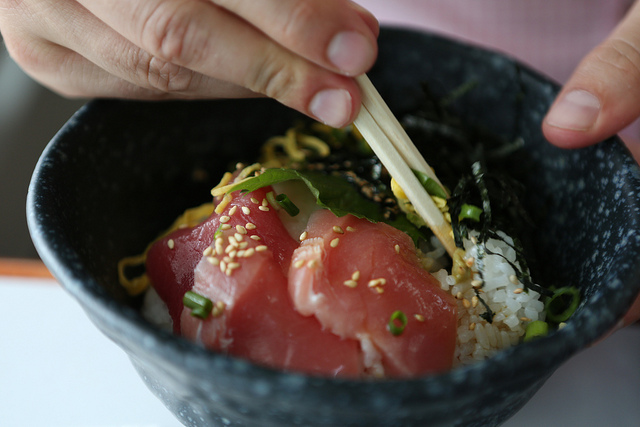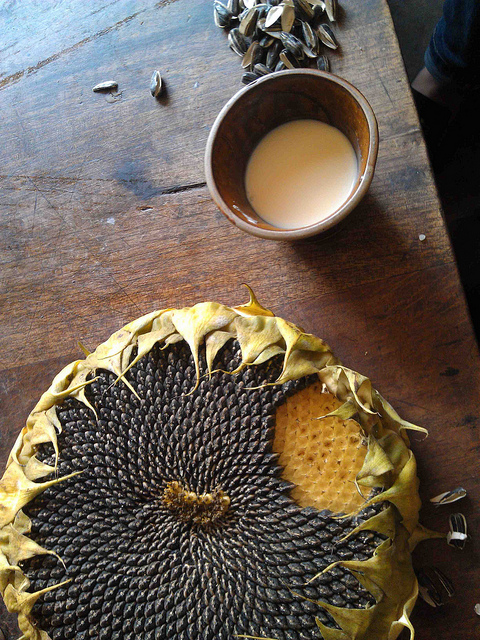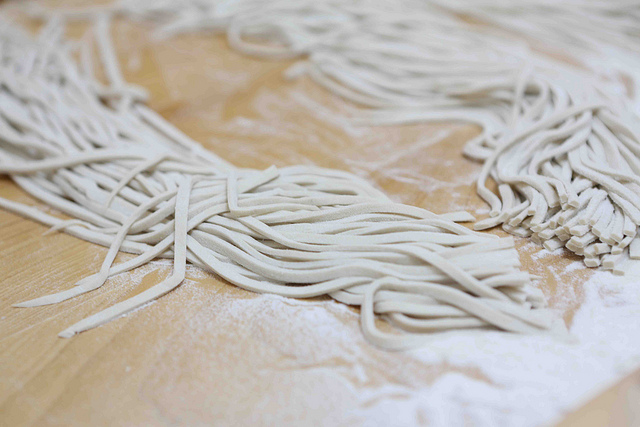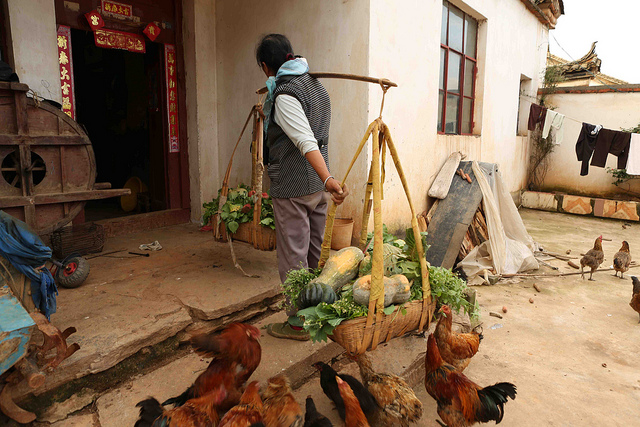

By Denise Lu
Think about the sustainable food movement and stories of dumpster diving or eating insects probably aren't the first things that come to mind. Upon closer inspection, however, perhaps these anecdotes may provide another approach to thinking about sustainable eating.
Daniel Klein and Mirra Fine, collectively known as The Perennial Plate, have made more than 100 videos since 2009 documenting interesting personalities who have unique approaches to agriculture and culinary practices in an effort to stir new ways of thinking about food. For instance, Episode 84 illustrates that dumpster diving, when done carefully with smart research, can be a practical and sustainable way of healthy living. And the same may go for eating insects : "Entomophagy is not the kind of thing that's going to get a lot of widespread adoption until we desperately need it," states David Gracer in "Eating Insects" (Episode 78). "Unfortunately by that point, the amount of chaos and civil upheaval is going to probably be really ugly."

Sustainable eating is multi-faceted, and The Perennial Plate offers a smattering of those under-the-radar viewpoints. Now, after a trip across the United States and with a large following under their belt, the couple is embarking on their third season: The Real Food World Tour.
"We look for interesting stories that illustrate self-sufficiency, creativity, and culture," said Fine. "I guess the message is just to think about what you're eating and who it came from."
Officially launched in September, the tour will last 14 months making stops in Japan, China, India, Sri Lanka, Spain, Morocco, Italy, Turkey, South Africa, Ethiopia, Argentina and Mexico. The pair plans to film three to four episodes on each country featuring stories about people who produce their own food. The first episode, which premiered in late October, highlights two exceptional stories about sustainable farming and culinary practices in Japan.

"We filmed an amazing 60-year-old man named Shimzu San who grows his own wheat to make udon noodles for his restaurant outside of Tokyo," said Fine. "We also visited a bluefin tuna fishery that is the only bluefin farm in the world that spawns its own tuna -- an important organization considering the current state of the bluefin tuna population."

What's even more impactful than the message behind the episode is the simple cinematic storytelling that Klein and Fine leave mostly up to the to the people they visit and interview, capturing a powerful human connection to the critical food issues we face today. With this world tour, Fine hopes to continue to share these insightful encounters with the world. "We want to encourage the exchange of culture and knowledge through an individual's story from halfway across the globe," she said.
Making these videos was also a wake-up call to Fine herself, who became vegetarian as a result of episode one which featured the preparation of a self-caught turkey before a Thanksgiving dinner. Though the episode is graphic at times, it is a perfect example of how The Perennial Plate is dedicated to capturing the unadulterated reality of exactly how food gets to our tables.

"I didn't really think about what I was eating or how it affected anyone else before I started working on this project," Fine admitted. "In China, we have been able to visit some small villages where families grow all their own food out of necessity, but also out of tradition. It's a beautiful thing, and it makes you want to waste less and appreciate more."
Especially with the world tour, Fine hopes the series will encourage viewers to experience and understand other cultures. "We don't want to tell anyone what to do or how to eat, but instead provide an opportunity for them to think about it on their own and make their own decisions."

Keep up with Fine and Klein on The Perennial Plate in the coming year as they showcase cultural food adventures with bi-weekly episodes. Additionally, here is a recipe by Klein from a recent trip to Alaska.
Salmon Skin Cracker with Tartare/Ceviche
Ingredients:
• 1 lb king salmon or sockeye
• Skin (more the better, but you could do it with just the filet that you have)
• 1 shallot
• 1 bunch of herbs (cilantro is best)
• 1 teaspoon fish sauce
• 1 teaspoon lime juice
• 1 tablespoon orange juice
• salt and pepper
• the zest of the lime and the orange
Remove the skin, making sure to take off all the flesh. Dry with a paper towel and put in a non stick pan on low with something weighing it down, cook for five minutes on both sides or until crispy. Remove from heat and salt.
Cut salmon into small dice. Add 1 small shallot, minced; 3 tablespoons minced cilantro (stems and all); the zest and juice of one grapefruit and 1 lemon; 1 teaspoon fish sauce; 1/2 cup salmon berries roughly chopped; 1 teaspoon honey. Mix five minutes before serving. This isn't a full ceviche, the fish is only partially cooked with the lemon juice.
Cut the fish skin into cracker sized pieces and serve the tartare on top.
All photos courtesy of The Perennial Plate.